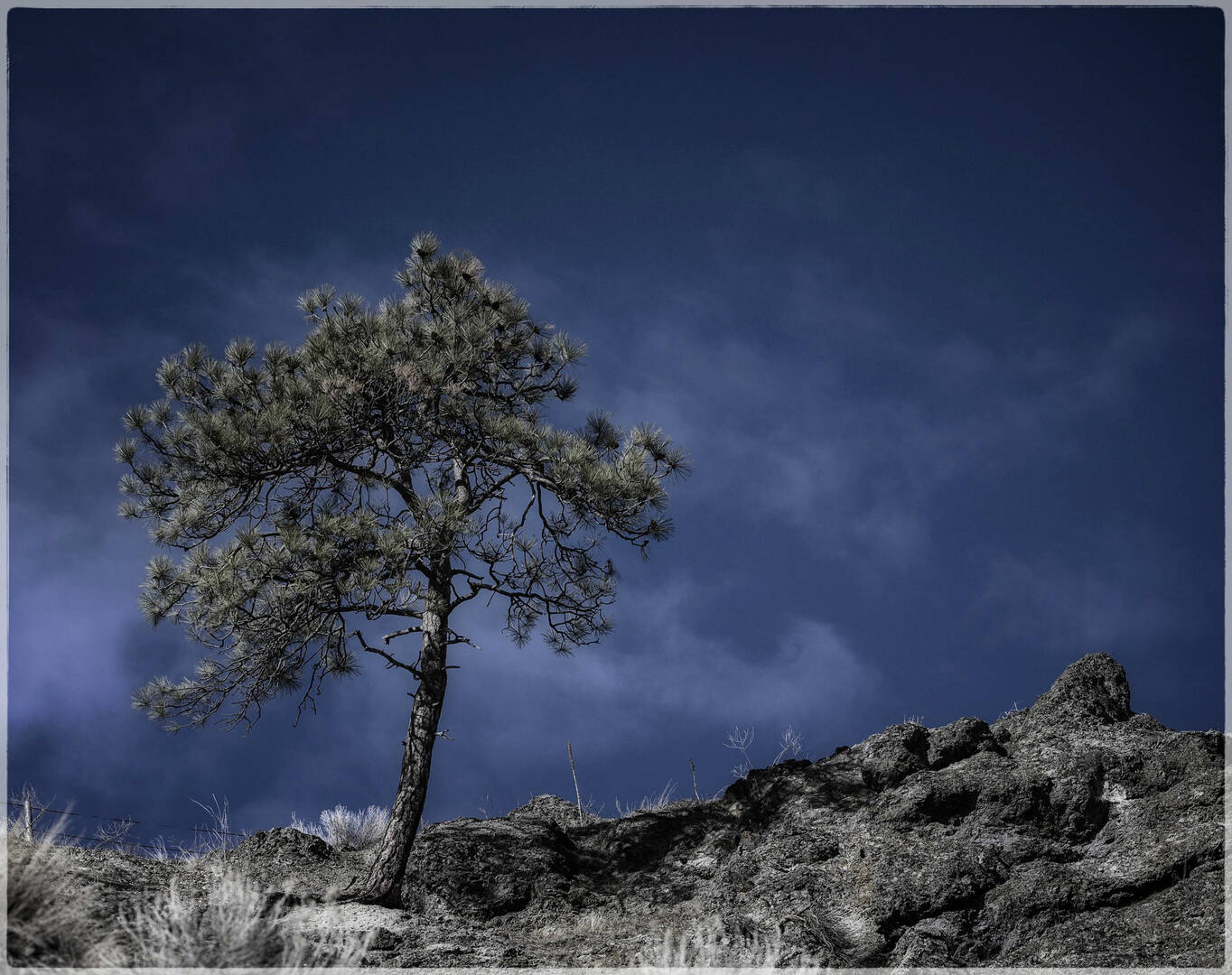This week I spent a few days exploring the picturesque corners of the Czech Republic. Actually, I didn’t plan to take any pictures, but you know how that goes. I made it two days without pulling out the camera, but on the third day I gave in. To make it even more challenging, I had only taken one lens – not my favorite 500mm f/4, but a third-party 16mm prime. Maybe one day I’ll find the courage to leave the telephoto lens at home when I go on bigger photo expeditions. In the meantime, join me for a refreshing dip in a Central Bohemian pond to see the ducks, and when you’re dry, grab a coffee and enjoy this year’s 28th edition of our weekly Photography News.

Recent Announcements
- Sony ZV-E10 II: The second generation of this vlogging camera pushes the capabilities of its predecessor in a number of ways. At the heart of the camera remains the Bionz XR processor and a 26MP APS-C BSI CMOS sensor. Despite the lack of an AI processing chip, Sony says autofocus should be improved. The ZV-E10 II has made a significant shift in video quality. At 4K resolution, the frame rate has been increased from 30p to 60p (up to 10-bit 4:2:2). Video is uncropped at 30p and only 1.1x cropped at 60p. Battery life is up from 440 to 610 still images and from 80 to 130 minutes of video. A number of software features have also been added, including better vertical video support. The camera can be purchased in black or white for $998, or bundled with the new 16-50mm lens for $1,098.
- Sony E PZ 16-50mm F3.5-5.6 OSS II: This is the new lens introduced with the Sony ZV-E10 II, although there’s a lot that’s similar to the previous version. According to Sony, this lens should offer “improved autofocus (AF) and video performance compared to the first-generation model.” The new lens is a mere 9 grams lighter than its predecessor, apparently due to the replacement of the metal mount with a plastic one. Other specifications remain unchanged, including the optical construction and the price, which stays at $298.
- Laowa CF 12-24mm f/5.6 Zoom Shift: Venus Optics in China announced the first zoom lens with shift function. On Laowa’s website you can find a very similar lens with the same zoom range, but in its non-shift and full-frame variant from 2022. It seems that these two lenses are optically identical (15 elements in 11 groups, MFD 15 cm, 77 mm filter size). What makes them different is the shift function of the new lens (up to 7mm). However, when this function is used, it can no longer cover the entire full-frame image circle. The lens will be available for all common mounts.
- Voigtlander APO-Lanthar 50mm f/3.5 Type I and Type II: A pair of optically identical manual focus lenses for Leica M-mount, differing only in the exterior of the barrel and the minimum focusing distance (Type II focuses 0.1m closer). The optical design of the lenses consists of 8 elements in 6 groups. The barrel material is up to you – the choice is between lighter aluminum with a black paint (150g and 175g) or heavier brass with a black & silver or silver finish (245g and 250g). Available in August 2024.
- Nikon Imaging Cloud: This new app allows you to connect your smartphone and camera together (though currently only the Nikon Z6 III). It combines four services: Image Transfer, Imaging Recipes, camera firmware update, and Nikon Image Space.
The Rumor Mill
What camera is coming next from Nikon?
According to Nikon Rumors, Nikon has three registered but unannounced cameras. This raises the question of what’s behind the model numbers N2216, N2312 and the recently registered N2318. These could possibly be the successors to the compact superzoom Nikon Coolpix P1000 and the APS-C mirrorless Nikon Z50. Of course, no details are known yet. Personally, I keep asking myself (for how many times now?) the hackneyed question. Will we ever see a worthy successor to the Nikon D500? Looking at the selection of dedicated Nikon Z APS-C lenses doesn’t fill me with much optimism.
The Nikon Z9 trains for the Olympics
The Olympics are not only a showcase for the world’s best athletes, but also a battleground for the best camera equipment to capture their performances. In the press section, Sony and almost certainly Canon will have some flashy new models. The Sony A9 III isn’t even a year old, and the Canon EOS R1 will probably be officially announced this week. Compared to them, the Nikon Z9 is a seasoned warrior full of scars (mine certainly is). But not to be left behind, the Z9 might get another firmware update that should improve its AF acquisition.
Via Nikon Rumors
DGO sensor in the Canon EOS R1?
We are only a few days away from a major announcement from Canon – watch this B&H page on July 17th at 6AM EDT. It is assumed to be the Canon EOS R1, a true RF-mount flagship camera. Recently, an article appeared on the Canon Rumors website speculating that the sensor in the R1 could be Dual Gain Output (DGO). This has only been used in the EOS C300 Mark III and EOS C70 cameras. Its main advantage is a significant increase in dynamic range (up to 16+ stops). However, both cameras are designed for video recording. Will the R1 be the first camera to use DGO technology for still photography? We will find out very soon.
Via Canon Rumors
Good Deals and New Sales
Years after its release, the Nikon Z9 confidently holds its launch price. But while the $5,497 MSRP remains unchanged, you now get as a bonus the Nikon MC-CF660G memory card ($767 separately), which took the top spot in our speed test.
Tamron is currently offering an even better price/performance ratio than usual on some of its lenses. You can save between $50 and $200 on a single lens. This discount will be most interesting for Sony users, but some of these lenses are also available for Nikon Z or Fuji X mounts.
- Tamron 35-150mm f/2-2.8 Di III VXD (was $1,899, now $1,799)
- Tamron 50-400mm f/4.5-6.3 Di III VC VXD (was $1,299, now $1,199)
- Tamron 70-180mm f/2.8 Di III VC VXD G2 (was $1,299, now $1,199)
- Tamron 150-500mm f/5-6.7 Di III VC VXD (was $1,399, now $1,199)
- Tamron 70-180mm f/2.8 Di III VXD (was $1,199, now $1,079)
- Tamron 17-28mm f/2.8 Di III RXD (was $899, now $799)
- Tamron 28-75mm f/2.8 Di III VXD G2 (was $899, now $699)
- Tamron 28-200mm f/2.8-5.6 Di III RXD (was $799, now $699)
- Tamron 11-20mm f/2.8 Di III-A RXD (was $829, now $699)
- Tamron 18-300mm f/3.5-6.3 Di III-A VC VXD (was $699, now $599)
- Tamron 70-300mm f/4.5-6.3 Di III RXD (was $549, now $499)
- Tamron 20mm f/2.8 Di III OSD M 1:2 (was $299, now $249)
- Tamron 35mm f/2.8 Di III OSD M 1:2 (was $249, now $199)
- Tamron 24mm f/2.8 Di III OSD M 1:2 (was $249, now $199)
Other Pages of Interest
Nikon Corporation’s Global Headquarters and Innovation Center has changed its address. On the Nikon News website, you can take a look inside and see some photos of where the next Nikon cameras will be developed.
Before you take a look at some great submissions to our 57th Photo Theme Challenge below, be inspired by the best entries in the Astronomy Photographer of the Year, Big Picture Natural World Photography, and Leica Oskar Barnack Award competitions. That’s a ton of inspiration for the week ahead, so enjoy.
Photo Theme Challenge, Week #58
Last week’s theme was trees, and you can see the results in this thread. Thank you to everyone for your submissions! This week’s theme is words, and you can submit your results in this thread by Saturday, July 20, 2024!
Week #57 Results
This week we had so many great submissions, and it was hard to choose a few here. Let’s check out some of the shots we received, starting with Cjay’s photo, who is a first-time submitter for our weekly photo challenge:

The classic “lone tree”, and it is very nicely shot with a dark background to enhance the subject.
Mark Fulton’s submission is a cloud forest scene in Costa Rica:
What is so interesting here is that the trees are used to frame the fog, and it gives a great impression of an intact forest.
Next, let’s check out Darin Marcus’s shot:

Unlike the expected fully-grown tree, we have a new seedling here. Isn’t it amazing how different the new plant is compared to a mature tree?
Finally, let’s see PRG Lagarde’s photo:

The clear presence of the big tree and the more hidden smaller version look very nice together. Great lighting and a secondary red-green-blue theme.
Thanks everyone for submitting their photos in the challenge, and we hope to see more next week in the words theme.
Give a man a hammer and the whole world looks like a nail. Give Libor a lens and he comes back with great photos whatever hammer he had.
Great as usual, Libor.
Three newly registered Nikon products, though not necessarily cameras: N2312 is a battery grip.
Hi Libor, thanks for the feature here.
DGO looks like an interesting novelty, even if it probably means we will have to change software versions all the way ;).I’m eager too to read some Z6III review here, even if I’m not interested in actually buying the camera :D .
Libor, how do you like the Viltrox 16 mm 1.8 ? Would it work for nightscapes ?
Hi Michael, so far I really like the Viltrox. Except for the hood, which I’m afraid I’m going to lose somewhere soon. As for nightscapes, I can’t answer you yet because I haven’t tested the lens for those purposes. I’m going to do that this week, so I’ll let you know here or in the upcoming field review.
Thank you, Libor!
I understand that you are trying the Z6III – can’t wait to read your first impressions.
Hi Darin, unfortunately I haven’t gotten my hands on the Z6 III yet. I will probably get it next week. As soon as I test it properly and get some sample shots, I’ll post a field review. My expectation is that it will be a more ergonomic Zf, which means amazing stabilization, fast enough and reliable AF, and more customizable buttons. I have no doubt that the image quality will be of a high standard, but I am still curious about the sensor. Especially its resistance to the rolling shutter effect in silent mode. It will be an interesting test.
I think the rolling shutter in the Z6 III is reasonably well controlled. I am using the Z6 III since roughly three weeks and so far I am only using it with 20 FPS raw in electronic shutter mode for photography. Also, when looking at the video modes and the FPS in raw it is the much better camera. The benefit of the ZF is the higher dynamic range of the sensor and its lower read out noise – both of which are a consequence of the new sensor design. Having said this I think there are a couple of things Nikon should fix with the Z6 III through their firmware strategy which has been extremely successful for the Z8 and Z9. I could bring back the camera for another 10 days – but I already know that I will keep it since it fits quite well for my needs.